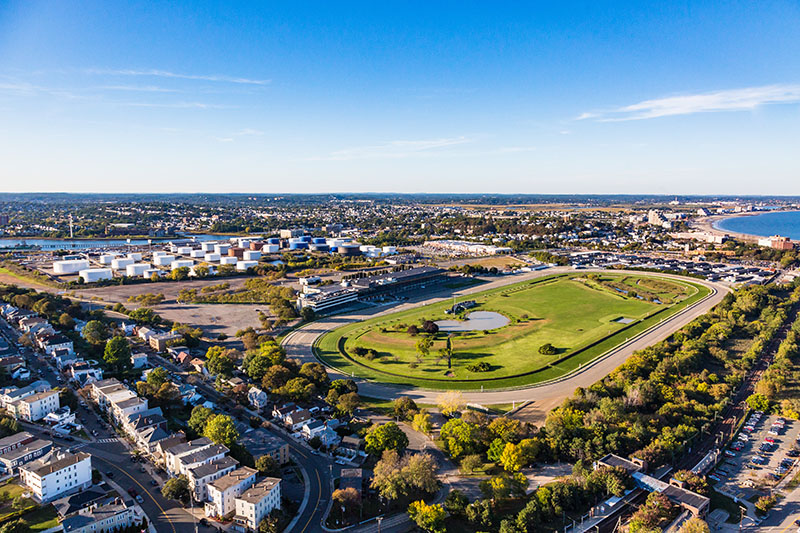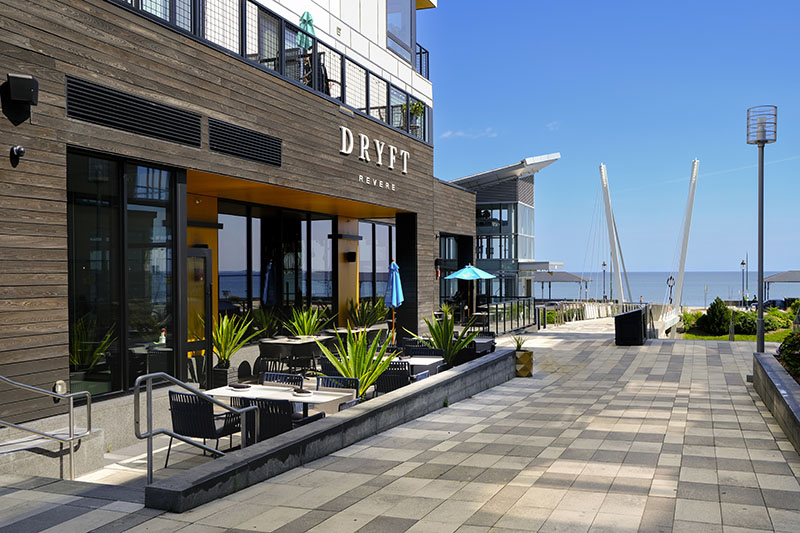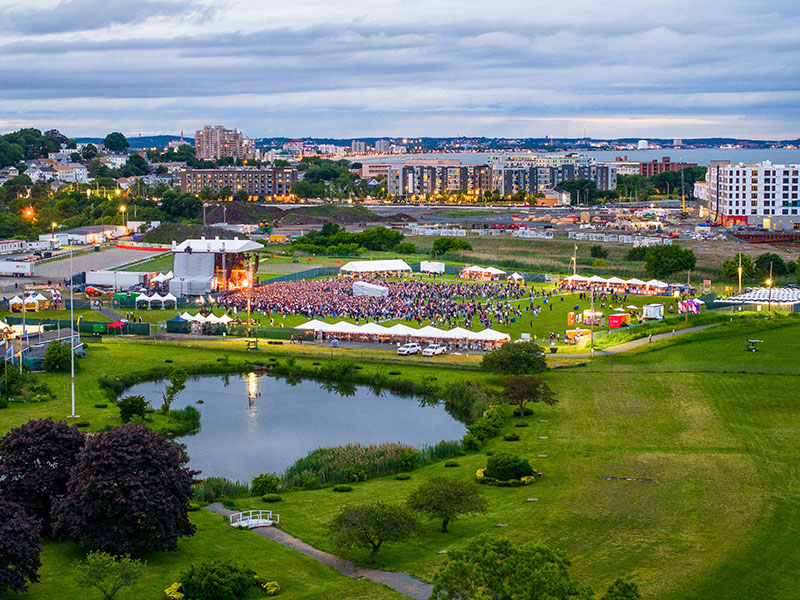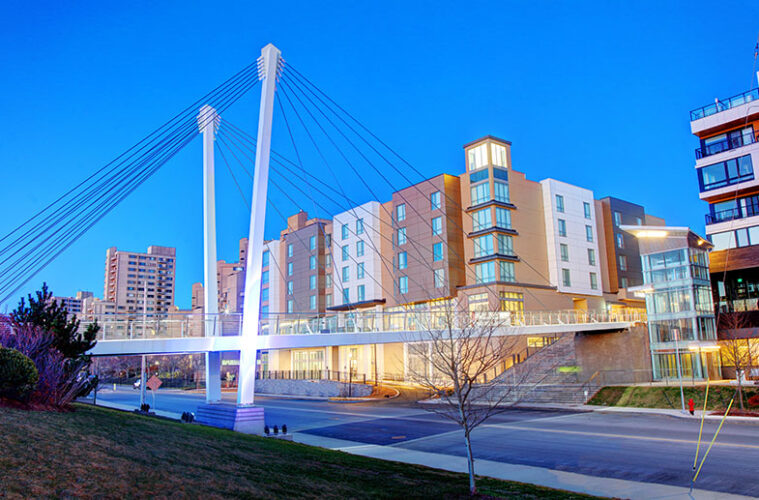There’s no way to talk about Revere without talking about the beach. Stretching along three sandy miles, Revere Beach was the first public beach in the United States and remains a major attraction for the small city just north of Boston. It still offers free parking, keeping alive its reputation as the “people’s beach.” It hosts an annual sand-sculpting competition, a kiteboarding school, and hundreds of thousands of beachgoers each year.
Start walking inland, however, and you’ll see there’s far more to Revere than its renowned sand and sea. This traditionally Irish and Italian working-class suburb has been evolving over the past decade and today offers upscale dining, vibrant nightlife, and a bustling multicultural commercial district.
“Revere is going through a renaissance right now,” says Erica Porzio, executive director of the Revere Chamber of Commerce. “That’s the perfect word for it—this is a rebirth.”
Change is not new to Revere. The area was first settled by Europeans in 1624 and was occupied mainly by farmland for the next two centuries. Then, in 1838 and again in 1875, the completion of new railroads sparked growth. By the 1880s, investors were opening resorts in the town and in 1896 the beach opened as a public destination. Throughout the 1920s, it was a popular destination filled with ballrooms, roller coasters, and restaurants. From the midcentury on, however, a series of natural disasters and financial difficulties kept the area from being all it once was.

Over the past decade or so, however, the city has been changing again, this time recapturing some of its former distinction.
Perhaps the most visible change has been the development along the waterfront. In recent years, high-end apartment complexes have gone up on previously empty lots. The buildings have drawn new residents and new amenities. Restaurateur Michael Aldi has opened three restaurants in these developments—Dryft, Fine Line, and Cut 21. Mission Beach House—run by a restaurant group with other popular destinations in Beverly, Newburyport, and Swampscott—opened in the same area last year.

“If you haven’t been to Revere Beach since 2018, you just don’t understand the nightlife that’s there now,” says Charlie Giuffrida, the city’s director of travel and tourism. “I just love hearing how astounded people are.”
At the same time, an influx of migrants has created an exciting cultural richness. Revere is now home to the second-largest concentration of Colombian people in the United States and the largest population of Moroccan immigrants, as well as sizable Middle Eastern, North African, and Brazilian populations. As of 2020, an estimated 41 percent of Revere residents were born outside the United States.
“We’ve seen a beautiful diversification of people,” Porzio says.

This burgeoning multiculturalism is much in evidence on Shirley Avenue, the city’s main downtown area, which runs from Route 1A almost down to the waterfront. Once a rundown, unappealing stretch, the neighborhood has been revitalized in recent years: New apartment buildings have been popping up, and state funds have widened sidewalks and added trees and lighting.
New businesses and restaurants are opening, reflecting the international influences in the neighborhood. Visitors can sample Mexican street food at Esquite, sip fresh juices at F&J Juice Bar Café, or step off the main drag to explore Moroccan flavors at Sabrine Bakery & Café.
“Shirley Ave. has now become a real cultural epicenter in Revere,” says acting mayor Patrick Keefe.
Revere’s evolution is far from complete. Plans are in the works to turn former horse-racing track Suffolk Downs, which straddles the border between Revere and East Boston, into a cosmopolitan, mixed-use neighborhood including offices, life sciences research facilities, retail, open public spaces, an outdoor amphitheater, a hotel, and more than 10,000 units of housing. Already, the property has started opening up to the community, hosting concerts, opening a dog park, and welcoming walkers to exercise on the track where horses once raced.
So far, Revere’s boosters say, the city has found a balance between retaining its accessible cultural character and attracting high-end businesses and development. At the moment, new investment is strengthening rather than overshadowing small businesses, making the city feel energetic and alive, they say.
And those watching the changes expect even more is yet to come.
“Revere has transformed in the last 10 to 12 years, and it’s only getting better,” says Aldi.

